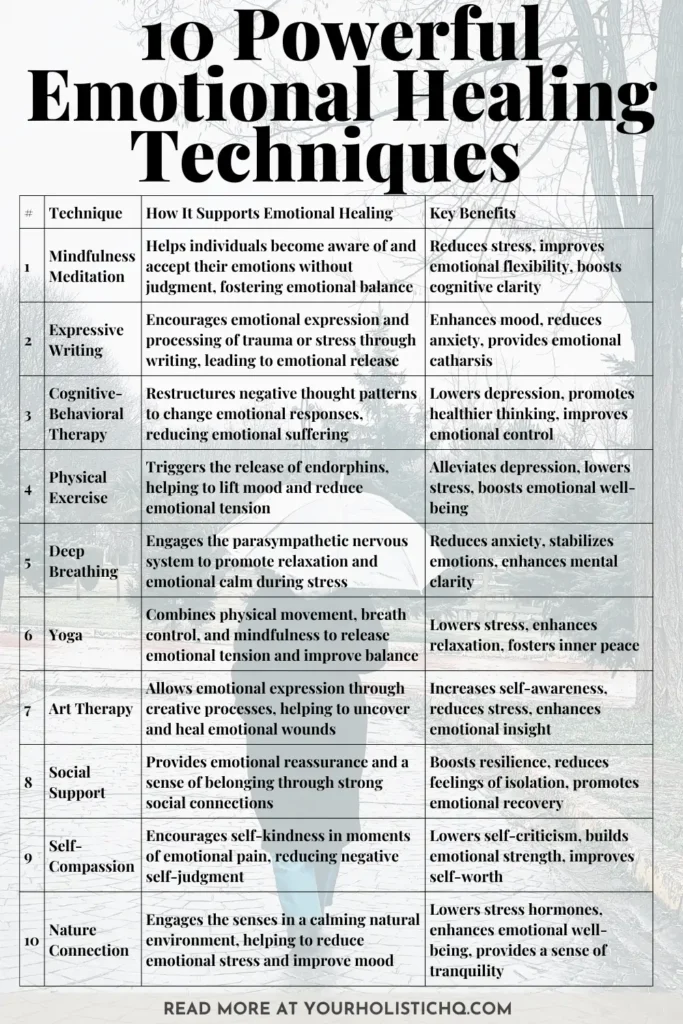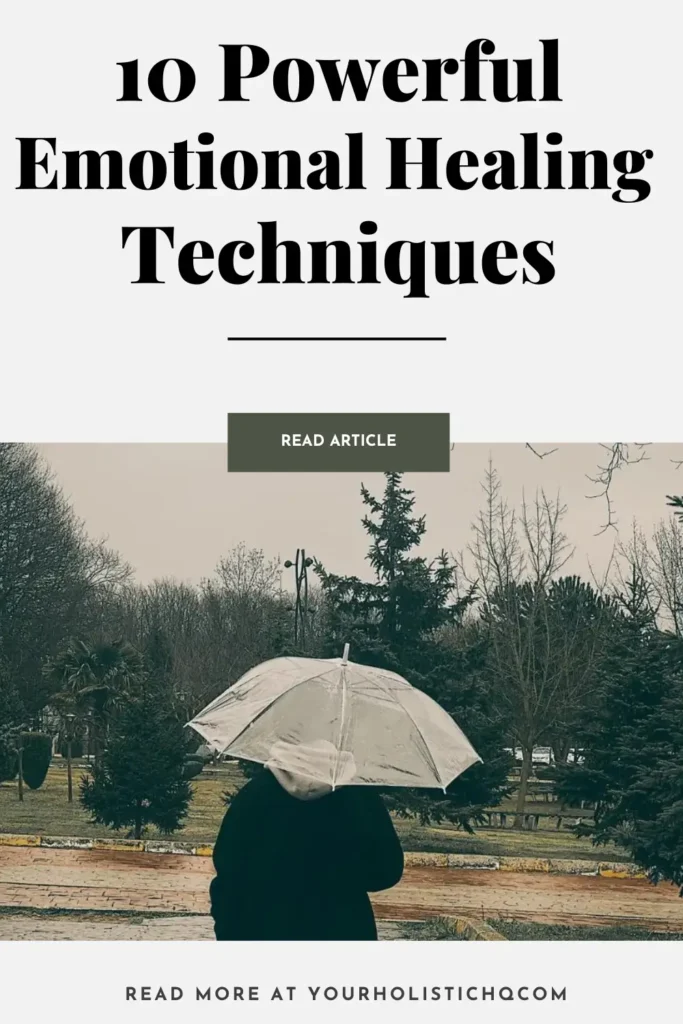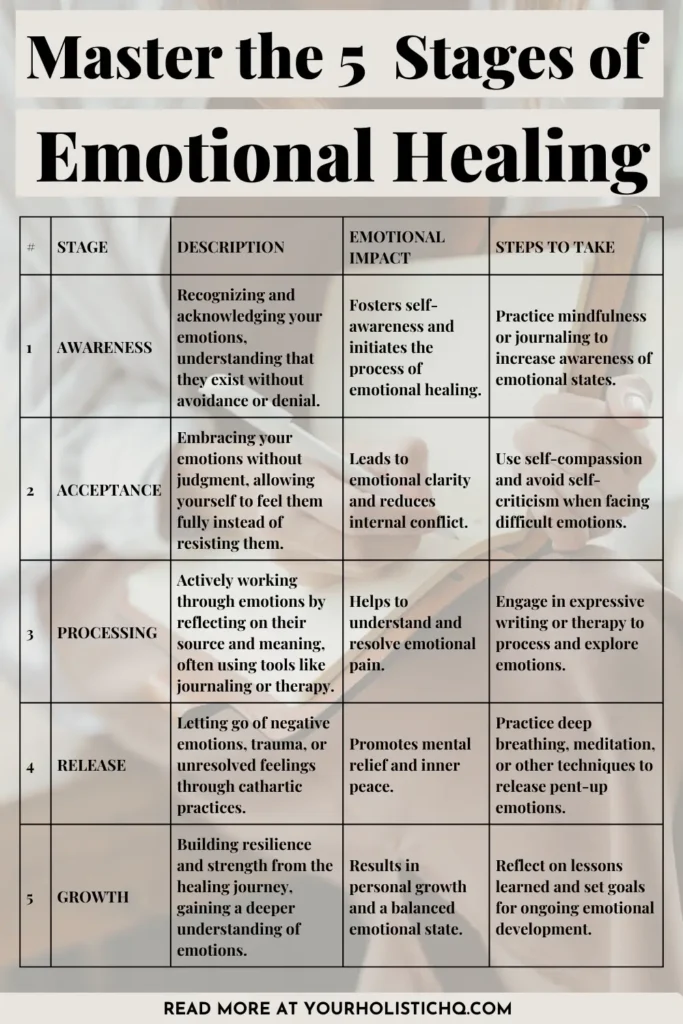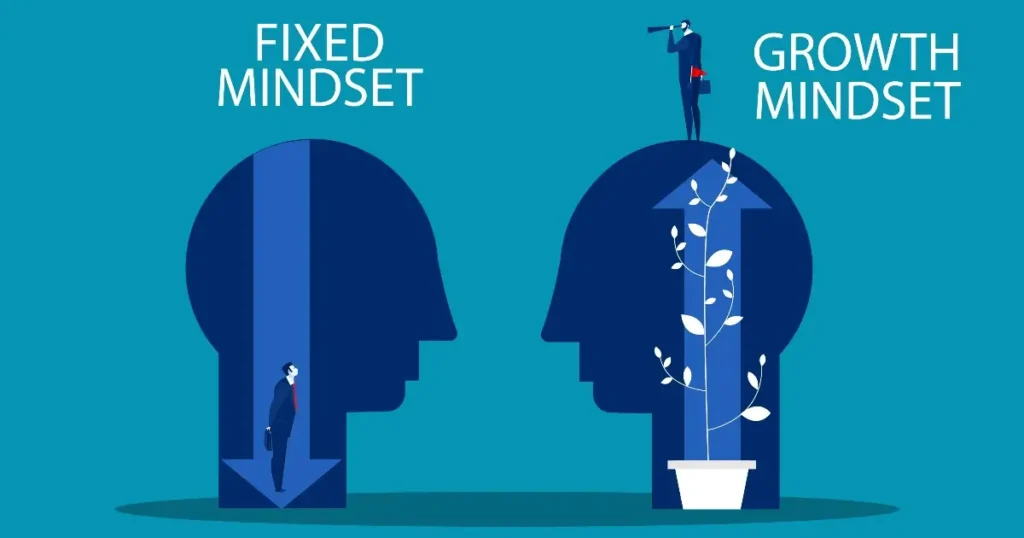10 Powerful Emotional Healing Techniques

Emotional healing is a journey that helps you recover from pain, trauma, or stress and regain a sense of balance. It requires more than just time; it calls for techniques that help you understand and manage your emotions in a healthy way.
While the healing process is unique for everyone, there are proven methods that can support emotional recovery and build resilience.
This article will introduce key techniques that can guide you through this journey, helping you reconnect with yourself and find greater peace of mind.
How Can You Heal Emotionally?
Healing emotionally begins with acknowledging and accepting your feelings rather than avoiding them. It’s a process that involves self-awareness, patience, and care. There are various ways to support emotional recovery, such as practicing mindfulness, journaling, or spending time in nature. Finding what works for you can lead to greater emotional resilience and balance. By focusing on methods that encourage understanding and self-compassion, you can begin to heal and move forward toward a more peaceful state of mind.



1. Mindfulness Meditation

Mindfulness meditation is a powerful technique that trains the mind to focus on the present moment with full awareness. By directing attention inward, it allows individuals to observe their thoughts, emotions, and physical sensations without judgment or attachment. This practice creates a sense of mental clarity, enabling a person to step back from their automatic reactions and gain a new perspective on their emotional experiences.
Research consistently highlights mindfulness as a highly effective method for reducing stress and anxiety, while improving emotional regulation. Studies show that regular mindfulness meditation can rewire the brain, strengthening areas responsible for emotional control and reducing the impact of negative thought patterns. In fact, the practice has been integrated into therapeutic approaches for anxiety and depression due to its scientifically validated benefits.
Mindfulness isn’t about eliminating thoughts or feelings; it’s about learning to live alongside them with greater ease. Over time, it cultivates emotional resilience, helping individuals respond to life’s challenges more thoughtfully and calmly. By adopting mindfulness as a daily practice, emotional healing becomes a gradual process, where each moment of awareness brings you closer to inner balance and well-being.
2. Expressive Writing

Expressive writing is a therapeutic technique that involves putting thoughts and emotions into words, allowing individuals to process difficult experiences in a structured way. By writing freely about personal challenges, traumas, or stress, this practice creates a space for emotional release and self-reflection. It’s not about perfect grammar or storytelling but about expressing your raw, unfiltered emotions on paper, offering a powerful way to unburden the mind.
Research demonstrates that expressive writing significantly improves emotional health, lowering stress levels and enhancing mental clarity. Studies show that individuals who regularly engage in this practice experience reduced symptoms of anxiety and depression, while gaining insight into their emotional patterns. Writing provides a safe, private outlet to confront inner struggles, making sense of complex feelings in a way that spoken words sometimes cannot. It also helps to organize thoughts, making emotional experiences more manageable and less overwhelming.
Through expressive writing, healing becomes an active process. As emotions are transferred onto the page, individuals often experience a sense of relief, gaining distance from their feelings and greater control over them. This process fosters emotional growth, leading to increased resilience and a deeper understanding of one’s emotional landscape. Incorporating this technique into your routine can be a transformative tool for self-awareness and emotional recovery.
3. Cognitive-Behavioral Therapy (CBT)

Cognitive-Behavioral Therapy (CBT) is one of the most well-established and effective methods for addressing emotional challenges. At its core, CBT focuses on the relationship between thoughts, emotions, and behaviors. It teaches individuals to recognize and challenge distorted thinking patterns that can fuel negative emotions, such as anxiety or depression. By restructuring these thought patterns, CBT helps individuals create healthier emotional responses and behaviors.
Research supports the effectiveness of CBT in treating a range of emotional issues, including depression, anxiety disorders, and post-traumatic stress. Studies show that CBT can lead to lasting improvements by providing individuals with practical tools to change unhelpful thought habits. It is goal-oriented, often involving specific techniques like journaling, thought records, and behavioral experiments to test and alter thinking patterns. These tools empower individuals to break the cycle of negative thoughts and take control of their emotional well-being.
Unlike other therapeutic approaches that might focus more on insight or the past, CBT is highly focused on the present and the future. Its structured nature makes it accessible and practical, giving people strategies they can apply to daily challenges. By engaging with CBT, individuals gain the ability to manage their emotions more effectively, creating a pathway toward emotional healing and long-term mental health.
4. Physical Exercise

Physical exercise is often hailed as one of the most accessible and effective tools for emotional healing. While many associate exercise with physical health, its benefits for emotional well-being are equally profound. Engaging in regular physical activity triggers the release of endorphins, often referred to as the brain’s “feel-good” chemicals, which naturally elevate mood and reduce the perception of pain. This chemical boost helps alleviate symptoms of anxiety, depression, and stress, making exercise a powerful form of emotional therapy.
Scientific research supports the strong connection between physical exercise and improved mental health. Studies have shown that even moderate exercise—like walking, cycling, or swimming—can significantly reduce feelings of tension, elevate mood, and enhance self-esteem. Furthermore, exercise helps regulate sleep patterns and reduces fatigue, two factors often closely tied to emotional distress. The rhythmic nature of activities such as running or swimming also provides a meditative effect, allowing the mind to unwind and detach from negative thought cycles.
Beyond the immediate mental health benefits, physical exercise fosters long-term emotional resilience. It instills a sense of routine and achievement, giving individuals a positive outlet for managing their emotions. Over time, regular physical activity can transform how the body and mind respond to stress, promoting emotional balance and strengthening the ability to cope with life’s challenges. Incorporating exercise into daily life offers both immediate relief and sustained emotional growth.
5. Deep Breathing Exercises

Deep breathing exercises are a simple yet powerful method for emotional healing, offering immediate relief from stress and anxiety. By focusing on slow, controlled breaths, these exercises activate the body’s parasympathetic nervous system, which promotes relaxation and reduces the fight-or-flight response. This shift creates a sense of calm, helping individuals regain control over their emotions during moments of distress.
Research highlights the effectiveness of deep breathing in lowering heart rate, reducing blood pressure, and easing symptoms of anxiety. Techniques like diaphragmatic breathing or the 4-7-8 method are particularly effective in promoting emotional stability and mental clarity. These exercises can be practiced anywhere, making them a convenient tool for managing stress in daily life.
Incorporating deep breathing into your routine helps build emotional resilience over time. As you learn to regulate your breath during challenging situations, you develop the ability to stay grounded and present. This practice fosters emotional balance, offering a quick and accessible way to restore calm and clarity when emotions feel overwhelming.
6. Yoga

Yoga is a holistic practice that integrates physical movement, breath control, and mindfulness, offering a powerful approach to emotional healing. Through a combination of postures (asanas) and breathing techniques (pranayama), yoga helps release emotional tension stored in the body and calms the mind. The physical practice not only improves flexibility and strength but also creates a deep sense of inner balance and relaxation.
Scientific studies have shown that yoga reduces symptoms of anxiety, depression, and stress by regulating the nervous system and promoting mental clarity. By focusing on controlled breathing and mindful movement, yoga fosters greater emotional awareness, helping individuals navigate their emotions with calm and grace. The meditative aspect of yoga also encourages mindfulness, which is essential in processing emotions without judgment.
As a consistent practice, yoga cultivates emotional resilience and self-awareness. It offers a safe space for reflection, helping individuals reconnect with their inner selves and release emotional burdens. Over time, yoga becomes more than a physical exercise—it transforms into a practice of emotional healing, allowing you to navigate life’s challenges with greater ease and centeredness.
7. Art Therapy

Art therapy is a creative approach to emotional healing that allows individuals to express emotions that may be difficult to articulate through words. By engaging in artistic activities such as drawing, painting, or sculpting, people can explore and process their inner thoughts and feelings in a non-verbal, visual way. This form of therapy taps into the subconscious, offering a powerful outlet for self-expression and emotional release.
Research shows that art therapy can significantly reduce symptoms of anxiety, depression, and trauma. It allows individuals to externalize their emotions, making it easier to understand and process complex feelings. Art therapy also fosters self-discovery, encouraging individuals to explore hidden emotions and unresolved conflicts in a safe and supportive environment.
More than just a creative activity, art therapy is a therapeutic tool that promotes emotional healing and personal growth. By creating visual representations of their inner experiences, individuals gain new perspectives on their emotions, leading to greater self-awareness and emotional resilience. This form of therapy is especially beneficial for those who may find it difficult to express their feelings through traditional talk therapy.
8. Social Support

Social support plays a vital role in emotional healing, providing a sense of belonging, comfort, and understanding during challenging times. Strong connections with friends, family, or support groups create a safe space for individuals to share their feelings, seek advice, and receive emotional validation. These supportive relationships act as a buffer against emotional distress, helping to reduce feelings of isolation and loneliness.
Research consistently highlights the mental health benefits of social support, showing that those with strong social networks experience lower levels of stress, anxiety, and depression. Engaging with others helps individuals process their emotions, gain new perspectives, and feel less overwhelmed by their challenges. This emotional exchange fosters resilience, allowing individuals to cope more effectively with adversity.
In addition to offering emotional relief, social connections provide practical assistance, whether it’s through a listening ear, advice, or encouragement. Having a reliable support system can significantly accelerate emotional recovery, making it a crucial element in the healing process. Cultivating and maintaining these bonds strengthens emotional well-being and promotes long-term mental health.
9. Self-Compassion Practices

Self-compassion is a transformative practice that involves treating yourself with the same kindness, understanding, and support you would offer to others, especially during times of struggle or emotional pain. By acknowledging your own suffering without harsh self-judgment, you create space for healing and emotional recovery. Self-compassion helps break the cycle of negative self-talk, fostering a gentler and more forgiving relationship with yourself.
Research shows that individuals who practice self-compassion tend to have lower levels of anxiety and depression and greater emotional resilience. This practice encourages a balanced perspective on personal failures and setbacks, helping you recognize that pain and imperfections are part of the shared human experience. As a result, self-compassion reduces feelings of isolation and promotes emotional healing by cultivating inner strength and acceptance.
Incorporating self-compassion practices, such as mindful self-reflection or gentle affirmations, into your daily routine nurtures emotional well-being. Over time, these practices allow you to respond to emotional challenges with kindness and patience, fostering long-lasting emotional resilience and a deeper sense of self-worth.
10. Nature Connection

Connecting with nature is a powerful way to foster emotional healing, offering a calming and restorative environment that promotes mental well-being. Whether it’s through hiking, gardening, or simply spending time in green spaces, nature provides a sensory experience that soothes the mind and helps reduce stress. The sights, sounds, and smells of natural environments engage the senses, creating a grounding effect that encourages emotional balance.
Scientific research supports the mental health benefits of spending time in nature, showing that regular exposure to natural settings lowers stress hormones, improves mood, and enhances emotional resilience. Time spent outdoors allows individuals to step away from the pressures of daily life, offering a peaceful space to reflect, unwind, and recharge emotionally. Nature also has a unique ability to foster mindfulness, helping individuals stay present and process their emotions more clearly.
Incorporating nature into your routine, whether through outdoor activities or simply taking moments to appreciate your surroundings, can be a powerful tool for emotional healing. By engaging with the natural world, you can nurture inner peace, reduce emotional tension, and develop a deeper connection with yourself and the environment around you.
Final Thoughts

Emotional healing is a deeply personal journey, enriched by a variety of proven techniques that support mental well-being and resilience. From mindfulness meditation and expressive writing to the restorative power of nature, each method offers unique benefits that help individuals process emotional pain and foster self-awareness. These techniques are not just temporary fixes but practical tools that can be integrated into daily life to promote lasting emotional balance.
The power of these practices lies in their ability to help individuals navigate life’s challenges with greater clarity and calm. By engaging with methods like cognitive-behavioral therapy, yoga, and self-compassion, you can cultivate emotional resilience and develop a healthier relationship with your thoughts and feelings. Emotional healing isn’t about avoiding pain, but rather, learning how to confront and understand it in a way that strengthens you from within.
Integrating these 10 techniques into your life can create a foundation for lasting emotional growth. Whether you start with one or explore several, each practice has the potential to guide you toward a more balanced, peaceful, and fulfilling state of mind.

















